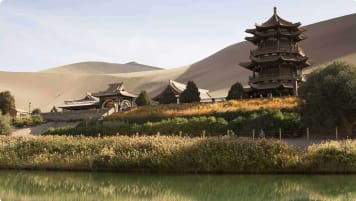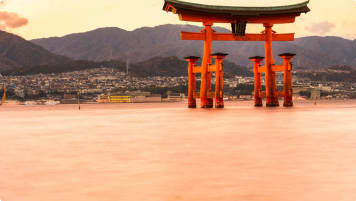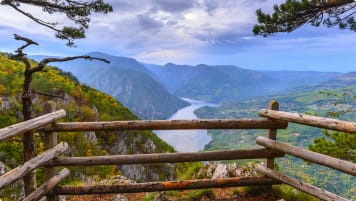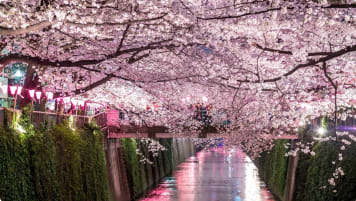The Shoguns of Japan
The Shoguns of Japan: An Introduction to Six Centuries of Japanese Cultural Evolution From 1192 to 1867, Japan was ruled by military dictators called the shogun. The civil government continued under the imperial court in Kyoto,…
10 Oct 18 · 17 mins read
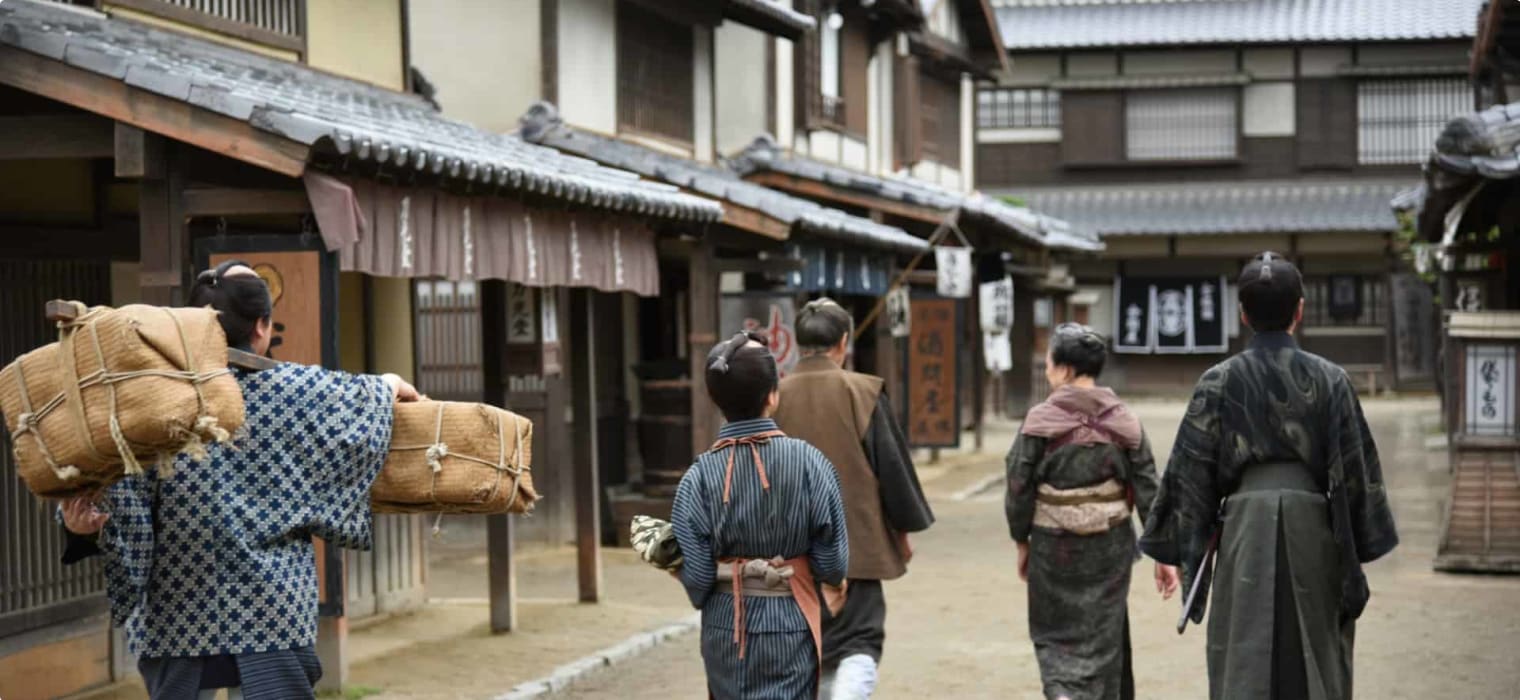
The Shoguns of Japan: An Introduction to Six Centuries of Japanese Cultural Evolution
From 1192 to 1867, Japan was ruled by military dictators called the shogun. The civil government continued under the imperial court in Kyoto, but the Japanese emperor during the era of the shogunate had no real power. The title of shogun, originally bestowed by the emperor, became hereditary, and the military dictatorship endured in Japan until 1867, when the Tokugawa shogunate fell and the emperor was restored to power during the Meiji Restoration.
In this article we will look at how Japanese culture and aesthetics evolved before and during more than six centuries of rule under the Kamakura, Muromachi (or Ashikaga), and finally the Tokugawa shogunate, with Japan moving from a culture built on predominantly Chinese foundations to a culture that was uniquely its own. We will also look at how the country evolved into an Eastern superpower in the 19th century when it began to adopt Western technology and culture under Emperor Meiji’s reign.
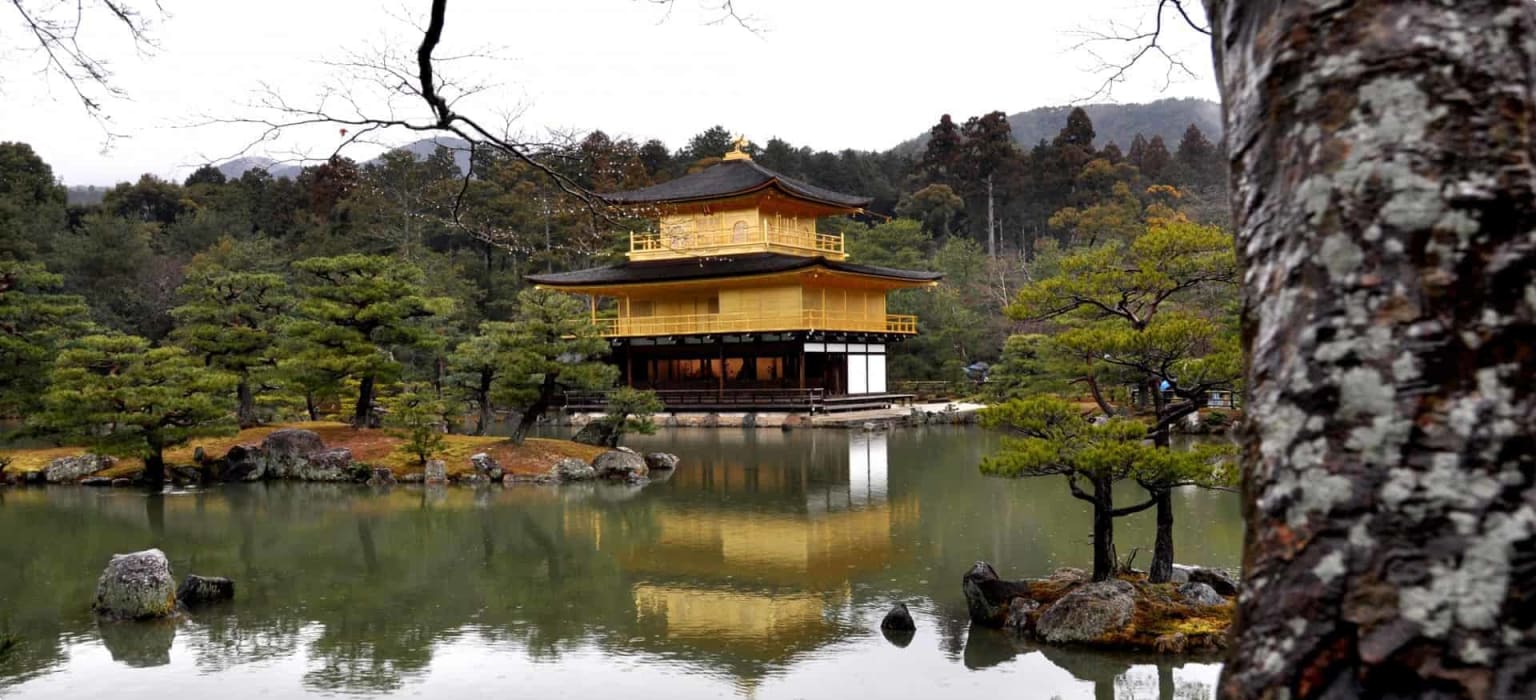
The Shogun, the Tang Dynasty, and the Japanese Aristocracy
The term “shogun” is an abbreviation of the official title Sei-i Taishōgun (“Commander-in-Chief of the Expeditionary Force Against the Barbarians”) which was given to military leaders enlisted by the imperial government to fight the Ezo tribes of northern Japan during the 8th and 9th centuries. The tribal group did not recognise the central Japanese government and did not see themselves as the emperor’s subjects. Some members of the tribe submitted to the government and were resettled throughout the empire, assimilating into the Japanese population.
Japan learned from and emulated the practices of the prosperous Tang dynasty of China, with which it had a robust trade and diplomatic relationship. Among customs studied and copied were the Chinese conventions of court etiquette, formal address and titles, tea drinking , and eating habits.
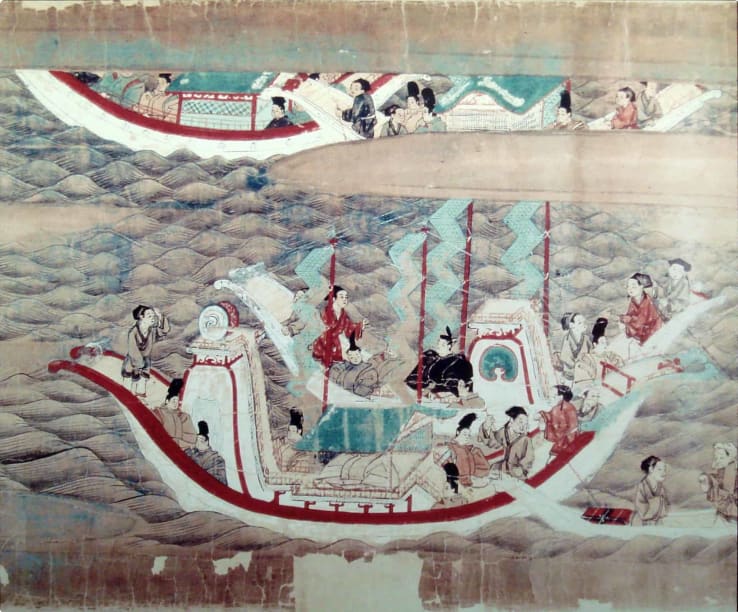
Japanese aesthetics also followed Chinese models. Japanese artists travelled or studied in China and brought back ideas, modelling their literature and music after Chinese canon. Nara, Japan’s first permanent capital, as well as the thousand-year capital Kyoto were modelled on the Tang dynasty capital, Ch’ang-an (located near modern-day Xian), as Mark Cartwright (2017) describes, with “most buildings for public administration having crimson columns supporting green tiled roofs. Heiankyo [Kyoto] was laid out on a regular grid plan with right angled streets creating regular-sized blocks…The royal palace followed Chinese ideas, and the city even had an Academy of Chinese Learning (Daigaku-ryo).”
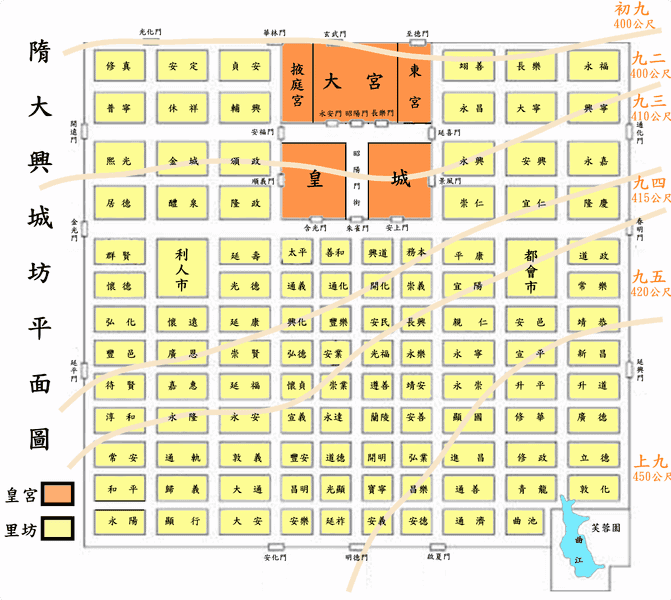
Japanese Buddhism during the Nara period (710-784) copied the Buddhism of Tang China (which in turn was modified from its Indian origins), but this evolved with the establishment of the Tendai and Shingon monastic sects, which developed Japanese characteristics. Buddhist deities were later adopted into Shinto, the indigenous religion of Japan that was created to distinguish it from Buddhism.
Since the 7th century, the Japanese followed the Ritsuryō system, a legal system based on Confucianism and Chinese legal philosophy that reached its peak during the Heian Period (794-1185). From the Chinese Legalist standpoint, “moral institutions are not a good guide for society, and good government should be based entirely on a fixed code of law and practices.”
Ritsuryō defined the government hierarchy and contained criminal and administrative codes that governed land usage, religious rituals, and criminal punishment.
In the 10th century, the imperial court modified Ritsuryō in two ways: it calculated taxes on the basis of land units instead of individuals, and it left local matters and provincial affairs to local officials. These sowed the seeds for the feudal system and the shogunate that would later undermine the central government.
The Fujiwara Clan
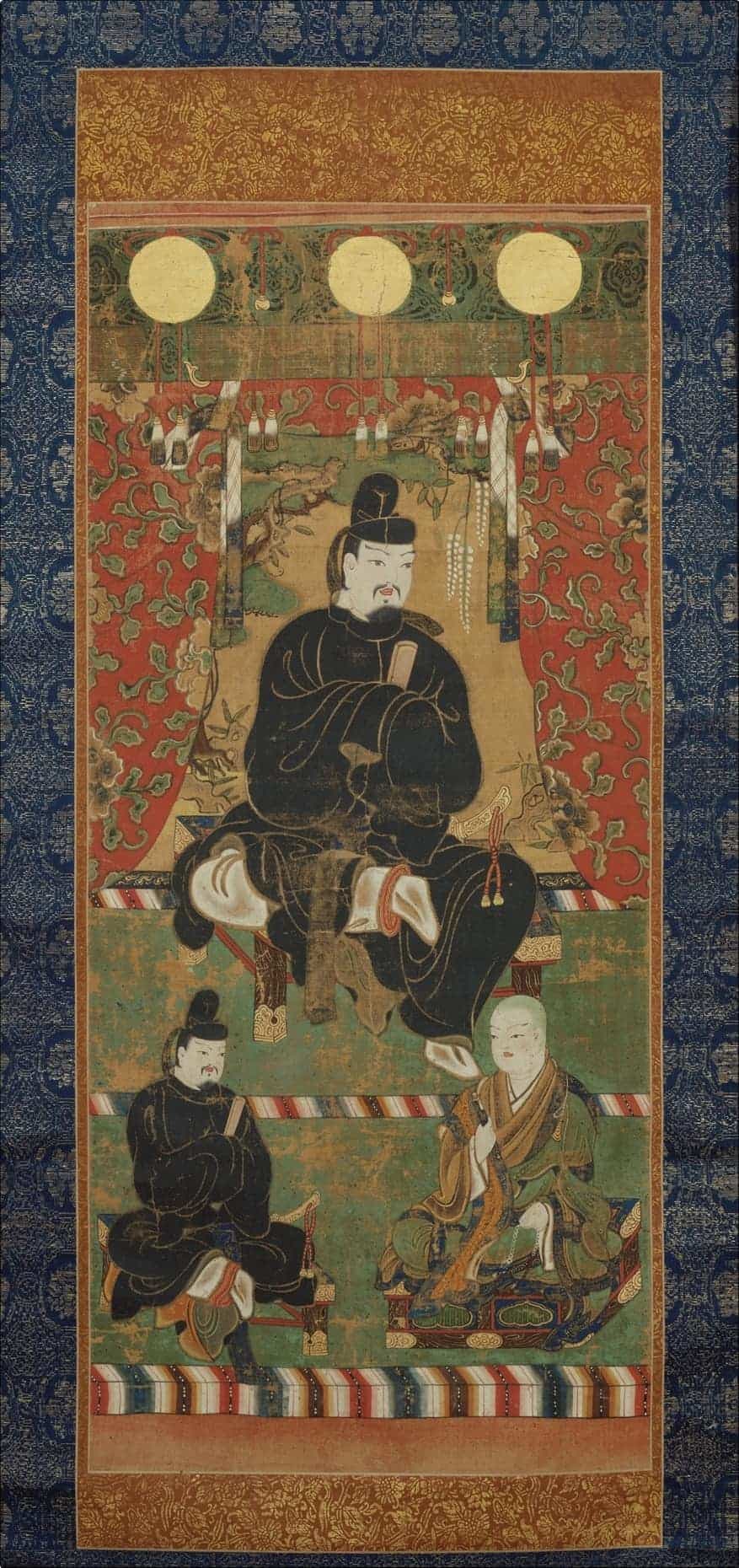
Government posts were also created outside the Ritsuryō codes. Two of these posts–the sessho (regent) and kampaku (chief councillor), with the collective name sekkan (regency)–further weakened the direct rule of the emperor.
The regency positions were monopolised by the Fujiwara clan, who gained political ascendancy by marrying Fujiwara daughters to Japanese emperors. The sessho office was created in the 9th century by Fujiwara Yoshifusa, maternal grandfather of Emperor Seiwa, in an effort to help the emperor who ascended the throne at only nine years of age.
Yoshifusa’s son, Mototsune, became sessho to succeeding emperor Yozei, and created the office of kampaku for the reign of Emperor Uda, who ascended the throne as an adult at age 21.
During this period, Chinese culture continued to be dominant, with scholars writing in Chinese prose and verse, and Chinese customs followed by the Japanese aristocracy. By the end of the 9th century, however, the Tang dynasty began to decline, and Japan cut off formal relations with China. The Japanese court, now with no court to emulate, slowly began to form its own traditions.
Private Land Ownership and the Samurai Class
The Ritsuryō system dictated public ownership of land but did not incentivise the reclamation of wasteland and development of new fields. Population was growing and shortage of developed land proved to be a growing social and economic problem. To solve this, in 723 the central government promulgated a law that allowed people to cultivate land they reclaimed, further strengthened 20 years later with a law which made the right to cultivate reclaimed fields in perpetuity hereditary. This resulted in massive land reclamation by wealthy families, with large swathes of public land passing into private hands.
These privately owned lands were known as shōen or “manors”. Private lands were taxable, but in the 10th century during the Heian period, shōen owners found ways to circumvent tax laws, making their now nontaxable estates independent of the civil administrative system.
The Japanese aristocracy grew even wealthier from their estates. Younger members of the imperial clan and lower-ranking aristocrats who were displeased with the Fujiwaras’ full control of upper government settled in the provinces, acquired their own lands, and amassed power. These officials, who had practised martial skills for centuries, developed their own armed forces, giving rise to the samurai or warrior class.
Japan Develops the Kana Scripts
While the samurai gained land and power in the provinces and the Fujiwara clan continued to grow wealthier in the imperial capital, Japanese culture continued to flourish, especially with the emergence of the kana scripts, hiragana and katakana, in the 10th century. Until then, Japan had no written language of its own as the Japanese used Chinese ideographs to guide meaning and pronunciation. However, the Chinese script was inadequate in capturing Japanese grammar. Hiragana simplified a number of Chinese characters, while katakana abbreviated them.
Hiragana, based on the cursive script style of Chinese calligraphy, was not accepted by everyone, especially by men, who continued to write official documents using Chinese script. Hiragana became popular among women of the Fujiwara court, who used the script in personal communications (such as letters) and in writing literature. The Tale of Genji, a novel by lady-in-waiting Murasaki Shikibu, was written in the early 11th century using hiragana.

Now with their own writing system, the Japanese began perfecting new poetic forms. One of these is the waka, consisting of 31 syllables, or five lines of 5-7-5-7-7 syllabic units, slowly supplanting the kanshi or poetry written in Classical Chinese that the imperial court originally favoured.
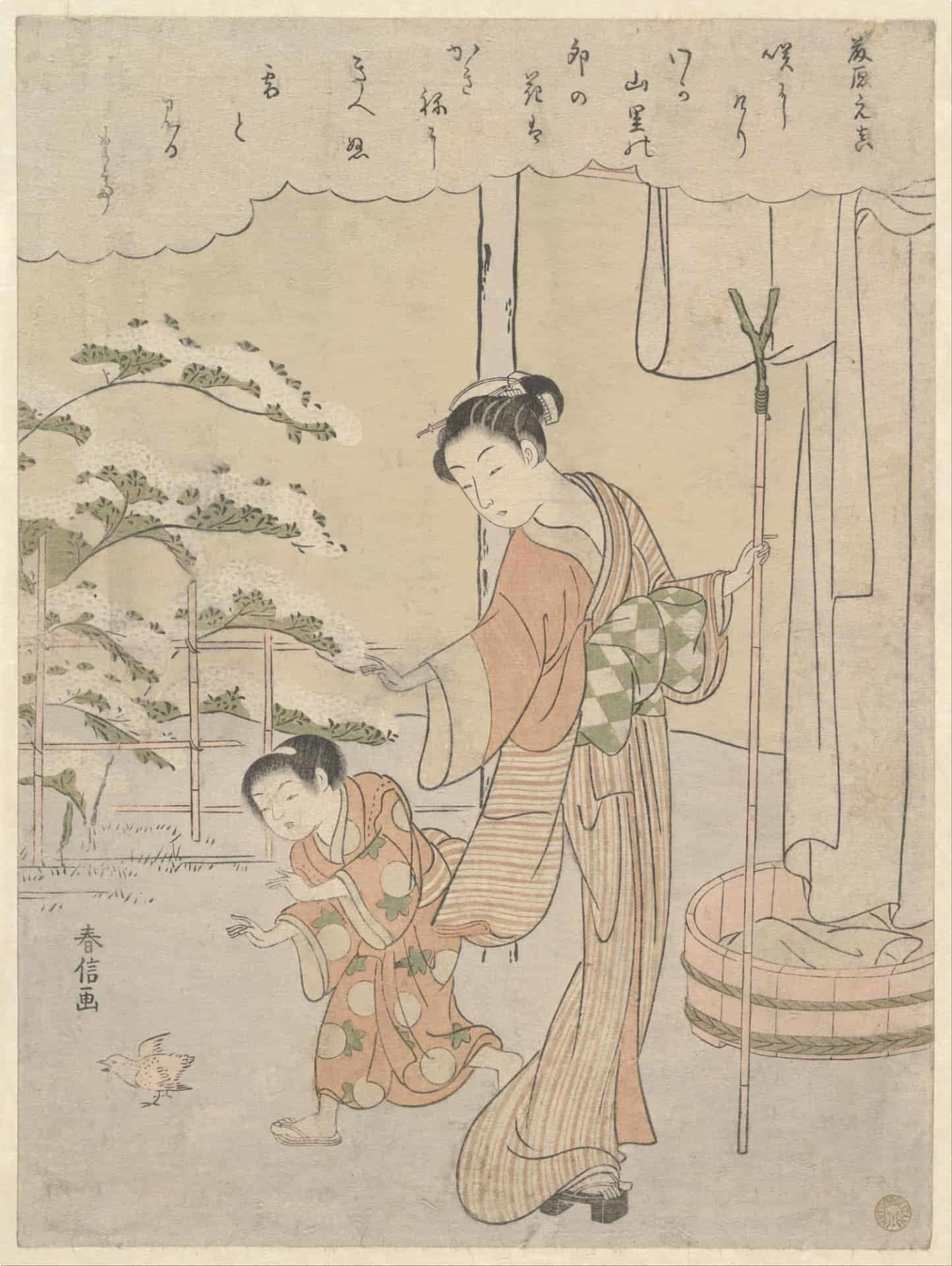
The Rise of the Shogun: Kamakura Shogunate
The more powerful of the samurai class slowly gathered in or near the capital, serving the military needs of the state or as private bodyguards of aristocrats. In the late Heian period (year 1068), Emperor Go-Sanjo ascended the throne, the first emperor in a hundred years not born of a daughter of a Fujiwara. The Fujiwara monopoly of the regency had come to an end.
Two warrior clans rose in power, the Minamoto and the Taira, who were enlisted by the aristocrats. Infighting within the imperial family and the Fujiwara clan led to the Hogen Disturbance in 1156 and the Heiji Disturbance in 1159, where the Minamoto and the Taira warrior clans were pitted by their employers against each other. The Taira emerged victorious, and they amassed power in the capital. The Minamoto built up strength in the provinces, until they rose in insurrection against the Taira in 1180.
The war against Taira ended in 1185 but the war continued within the Minamoto clan itself. In 1192, the victorious Minamoto Yoritomo travelled to Kyoto and was appointed shogun by the emperor of Japan. This meant the shogun still answered to the emperor, but bestowing the title of shogun gave the military leader control over a piece of land, establishing a feudal order and limiting the power of the emperor over the country. The emperor remained in the imperial capital of Kyoto, nominally the nation’s ruler but reduced to a ceremonial head of state with no real control over his people.
Minamoto Yoritomo seized the estate of the defeated Taira family and established the first shogunate (bakufu) in the 12th century in the village of Kamakura, far from the imperial court of Kyoto. Yoritomo appointed his military governors (shugo) to head each province, a national power structure that would influence Japan for the next five centuries.
The Kamakura shogunate managed to repel invasions by the Mongols in the 13th century, but its weakened command led to its collapse in 1333.
Ashikaga/Muromachi Shogunate
The forces of the new emperor Go-Daigo, joined by local warriors, brought down the shogunate in Kamakura. However, Go-Daigo’s reforms of centralising bureaucracy did not sit well with the local warriors. Ashikaga Takauji turned against the emperor and established the second shogunate which ruled the country from 1338 to 1573.
The Ashikaga clan moved the capital from the village to Kyoto, residing in the same city as the emperor. The period was also called the Muromachi Shogunate after the district in Kyoto where Ashikaga Yoshimitsu (Takauji’s grandson) moved the bakufu during his reign as shogun. He constructed the famed Kinkakuji as his retirement villa.
Now a Zen Buddhist temple, it is also known as the Golden Pavilion as the structure’s top two floors were completely covered in gold leaf. It is one of the 17 locations making up the Historic Monuments of Ancient Kyoto, which are listed by UNESCO as World Heritage Sites.
The Golden Pavilion’s first two floors were built in the Japanese shinden style, which was a style of mansion construction developed in the Heian period, while the topmost floor was built in the Chinese style of the Zen school. Travellers can visit the temple, which overlooks a magnificent pond and is surrounded by a strolling garden.
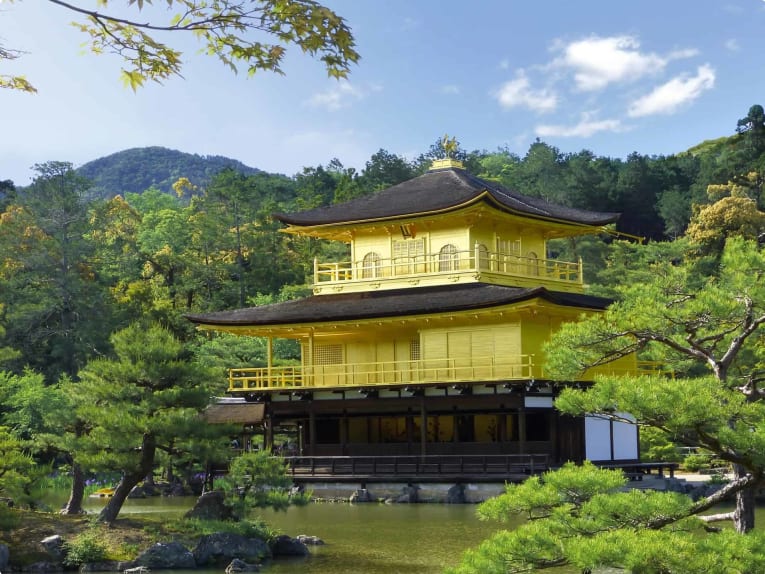
In order to raise more funds for the shogunate, the Ashikaga clan ordered each provincial shugo to levy monetary taxes on either every unit of land or every household, and extracted taxes from pawnbrokers and sake brewers. Yoshimitsu also re-established trade and diplomatic relations with China through the Ming Dynasty and with Korea’s Choson dynasty.
The shogunate supported scholarship and the arts, and during this period the Nō (Japanese word meaning “talent”; also spelled Noh) theatrical form of drama flourished. Nō was a form that developed from agricultural festival dances and ancient dance dramas, and focused more on visualising metaphors than narrative. Travellers can visit the Nagoya Noh Theatre and the Tokyo National Noh Theatre to watch performances of one of the oldest theatrical forms in the world.
The waka verse continued to be composed, but popular forms were also developed such as the renga (linked verse) and the free-style and less formal haikai no renga, which would later give birth to the modern haiku.
Tea drinking, introduced from China, developed into the refined tea ceremony, which in turn stimulated the aesthetics for tearoom architecture, flower arrangement, pottery, and ceramics. Travellers today can participate in an authentic tea ceremony, offered by various tea houses in Kyoto.
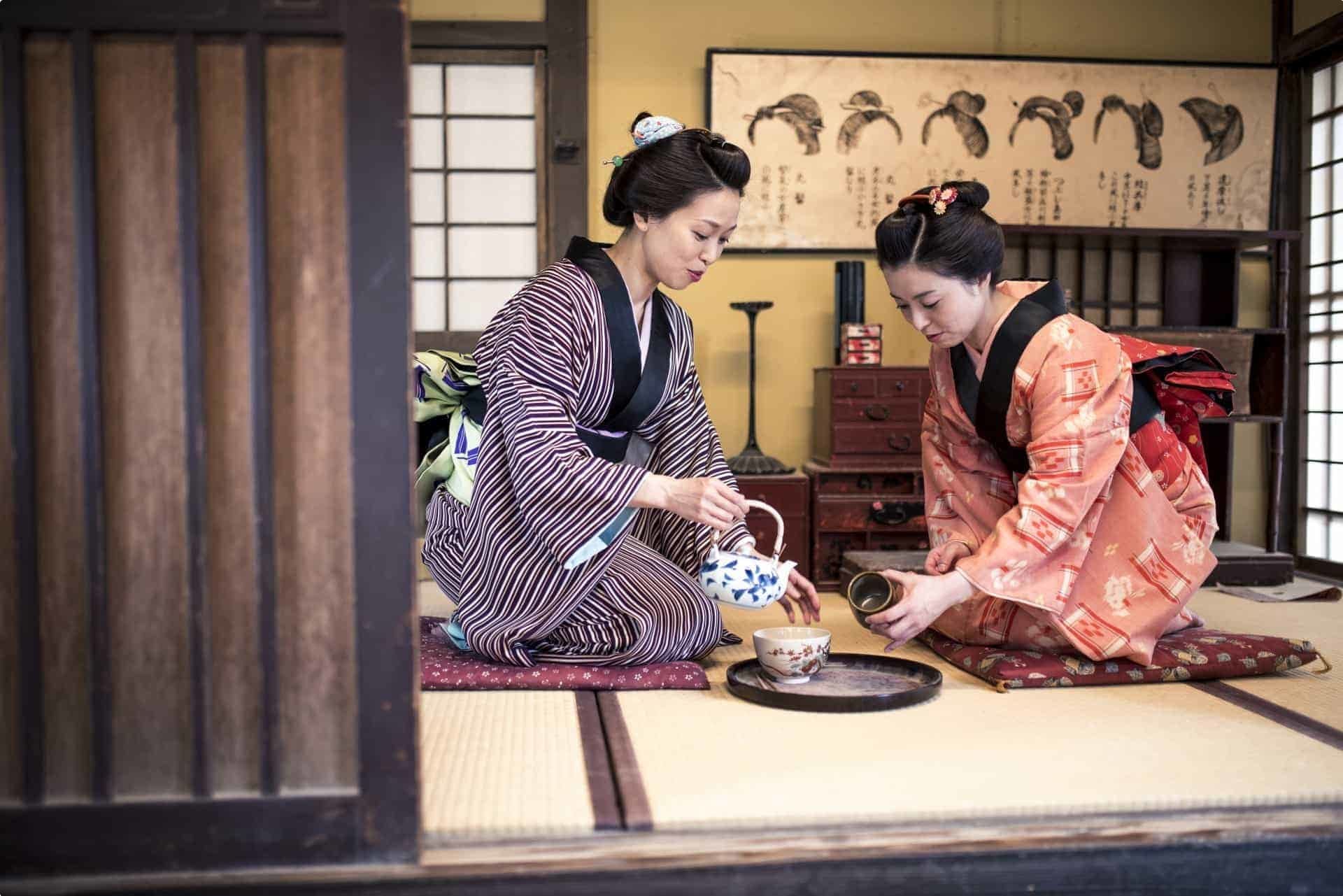
Europeans began to arrive in Japanese shores at this time as well. Several Portuguese were shipwrecked in 1543, and taught the Japanese musket construction, which shaped Japanese local warfare. From 1549, Jesuit missionaries began arriving in Japan to propagate Christianity. They came with Portuguese merchant ships, and the daimyo (feudal lords), looking to profit from trade, protected the religion, with some of them even converting to Christianity.
Though uniquely Japanese art developed under the Ashikaga clan, their rule was also characterised by years of power struggles, warfare among local lords, and famine. Ashikaga Yoshimasa later secluded himself in the Silver Pavilion (Ginkakuji), a sombre structure compared to its model, the lavish Golden Pavilion, further weakening the shogunate.
Like the Golden Pavilion, the Silver Pavilion (not covered in silver, though this was the original plan) is now a Zen temple that can be visited by travellers.
Tokugawa Ieyasu Comes to Power
Japan was splintered by local warfare. Daimyo Oda Nobunaga rose through the ranks in the provinces and entered Kyoto in 1568 in an attempt to unify the country. He defeated rival warlords and deposed the Ashikaga shogunate. However, his military exploits were cut short in 1582 after a betrayal by one of his vassals, Akechi Mitsuhide. Mitsuhide rebelled against him, and Nobunaga was wounded during the attack. He reportedly committed suicide by seppuku (the Japanese ritual suicide of disembowelment) to avoid being captured.
Nobunaga had already consolidated control of 30 out of 68 provinces by the time of his death. His deputy, Toyotomi Hideyoshi, avenged him and continued his work of unification.
Neither Nobunaga nor Hideyoshi took the title of shogun. Hideyoshi died in 1598, leaving behind a five-year-old son Hideyori and a brewing conflict because of the sudden power vacuum.
The factions vying for power fought at the Battle of Sekigahara in 1600. Tokugawa Ieyasu emerged victorious, and he was named shogun by the emperor in 1603.
Tokugawa Shogunate
Japan’s Tokugawa Period, also known as the Edo Period, lasted nearly 300 years from 1603 to 1868 and was characterised by a rigid social order, isolationist economic policies, and the weakening of the long-ruling shogunate that led to the Meiji Restoration and the return of imperial power.
Ieyasu moved the seat of the shogunate from Kyoto to the marshes of Edo, a small fishing village that would later become the neon-lit metropolis of Tokyo. He mobilised workers from all over Japan to build the Edo Castle, which became the centre of Japanese politics for the duration of his clan’s reign.
Edo Castle now houses the Emperor and his family and is now called the Imperial Palace. The inner grounds of the palace are generally not open to the public, but can be entered on January 2 (New Year’s Greeting) and December 23 (Emperor’s Birthday), during which members of the Imperial Family make several public appearances on a balcony. Guided tours of the palace grounds (but not the buildings, which remain off-limits) are also offered during the rest of the year.
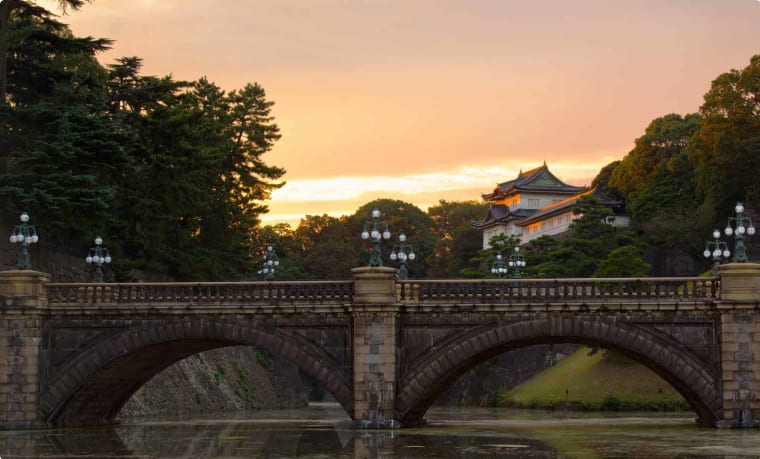
In 1603, Ieyasu began construction of the Nijo castle in Kyoto to serve as his Kyoto residence and office. It is now open to the public as a World Heritage Site (listed in 1994), one of the few surviving examples of palace architecture during Japan’s feudal era.
Ieyasu only officially served as shogun for two years, although he ruled from behind the scenes from 1605 until his death in 1616. Ieyasu, through his son, the new shogun Hidetada, began a series of reforms in an effort to bring social and political order to Japan after centuries of endless infighting and warfare.
The Four-Tiered Society
The shogunate adopted the Confucian scheme of social stratification, but altered it to favour the warrior class.
In the Confucian theory of an ideal society, scholars were at the highest level, followed by farmers, artisans, and merchants and soldiers. Under the Tokugawa Shogunate:
- The samurai or warrior class, which made up 10% of the Japanese population at the time, were at the highest level of society. As it was a time of peace, many samurai joined the bureaucracy. They were forbidden from owning land, and were expected to maintain military preparedness.
- Majority (80%) of the population belonged to the second tier, the farmers or peasants, who were allotted small plots to cultivate and were prohibited from engaging in non-agricultural work.
- Artisans and craft workers formed the next class, followed by
- the merchants or shop-keepers, who were seen as parasites leeching off the labours of other people.
There were people above and below this four-tiered system. The shogun, the emperor, and the Buddhist and Shinto priests and monks were above the system, while the burakumin (“the village people”; outcasts) were below the system. The burakumin included those engaged in occupations tainted with death and/or were considered taboo–butchers, undertakers, and prostitutes (including oiran, or courtesans), among others.

Movement within regions were regulated and the classes were not allowed to mingle, except in business transactions and in the licensed “pleasure quarters” in the city outskirts.
Isolation and Further Control
While lines were being drawn within Japanese society, the shogunate also drew hard demarcations between Japan and the rest of the world. According to Tashiro Kazui and Susan Downing Videen (1982), Japan before the Tokugawa shogunate controlled trade had trade relationships with several groups:
- in Nagasaki, the central government traded with the Chinese, the Ryūkyū Kingdom, and the Dutch East India Company. Ryūkyū, a semi-independent vassal state of China, was also controlled by the Shimazu clan daimyō of Satsuma Domain.
- in Ezo (now Hokkaidō), the Matsumae clan traded with the Ainu
- in Tsushima, the So clan traded with the Joseon Dynasty of Korea
The shogunate continued to be wary of the daimyo and feared the clans’ profitable trades would lead to them rising up against the government. In order to exercise complete control, the shogunate (under Ieyasu’s grandson, shogun Iemitsu) limited trade to Nagasaki by 1635, and limited the trading partners to the Dutch and the Chinese by 1641.
Also in 1635, the shogunate established the sankin-kōtai (“alternate attendance”) system, forcing the daimyo and their family to reside every other year in Edo as an expression of loyalty to the shogun.
The shogunate also took on an anti-Christian stance due to the religion’s growing power in Japan. Following a bloody Christian peasant rebellion in 1637 on the Shimabara Peninsula, Christianity was outlawed and Japanese Christians were driven underground. (Today, Christianity in Japan is a minority religion, with only one percent of the population saying they are Christian.)
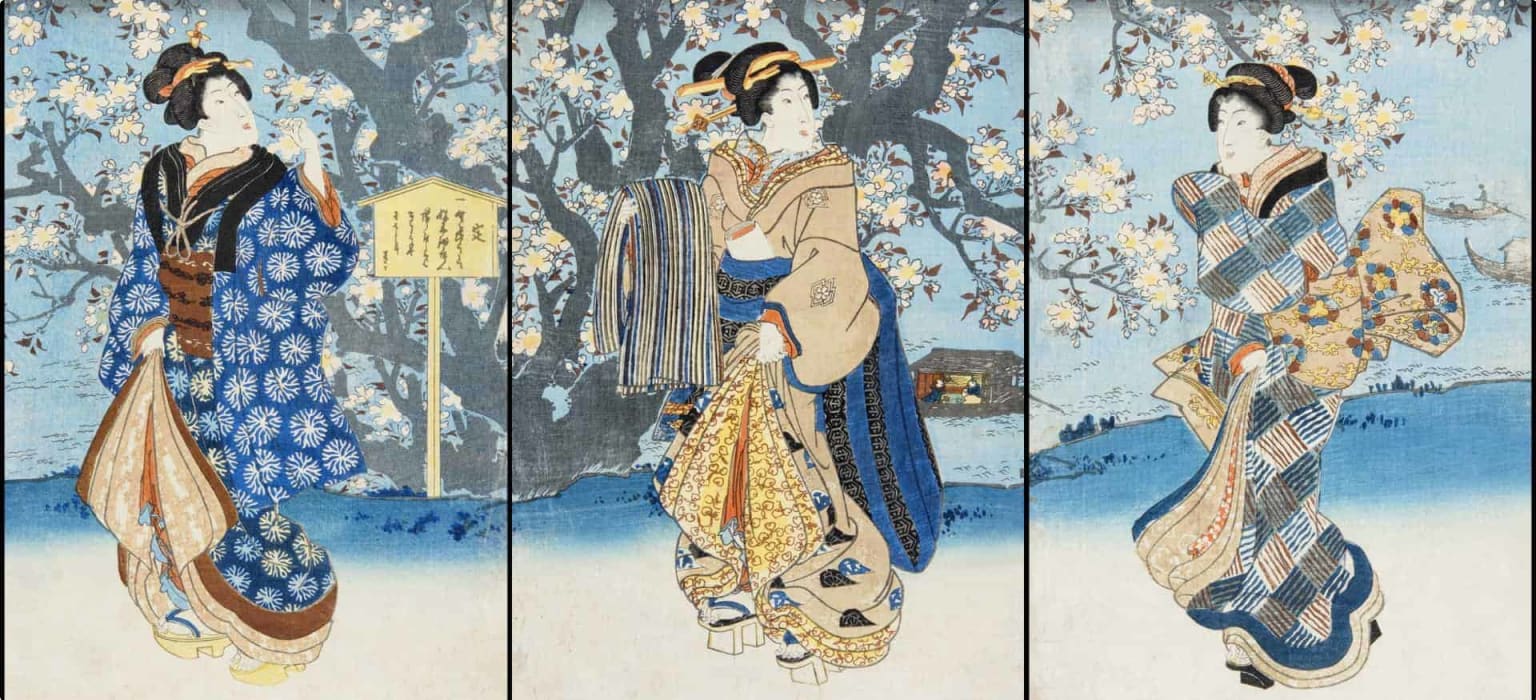
“The Floating World”
What followed was a time of relative peace and an upending of the four-tiered society: the samurai at the top of the ladder were starting to feel frustrated and useless, and the artisans and merchants (known as the chonin) were accumulating wealth but could not use this wealth to gain political power or move up in society.
This strange social situation, along with the rise of urban centres (Kyoto, Osaka, and notably Edo, which experienced a rapid population growth in the 17th century), created a pleasure-seeking lifestyle called ukiyo.
Ukiyo was a Buddhist term which meant “sadness of life” and communicated the transitory nature of life on earth. The Japanese hedonism of the 17th century, which saw the warriors and the chonin turning their attention to entertainment, art, the theatre, and other expensive earthly pleasures (centred in the Edo red-light district, the Yoshiwara Pleasure Quarter), led to the swapping of the term with a homonym which meant “floating world”.
This lifestyle was illustrated in the ukiyo-e (“pictures of the floating world”) woodblock prints which became popular even among European artists.

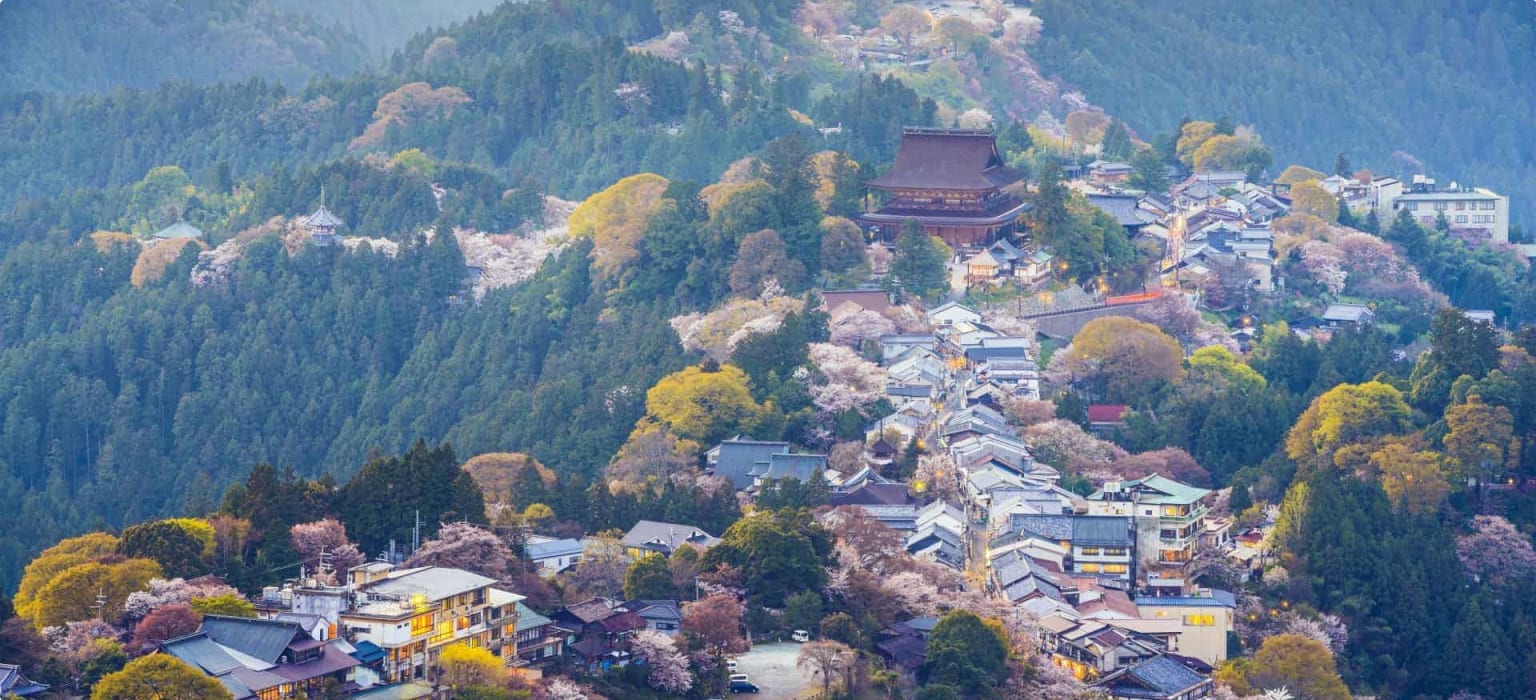
Meiji Restoration
The Edo period could not float for too long, however. In 1853, American Commodore Matthew Perry and his ships entered Japan, refused to obey orders to leave, and threatened to use force if the Japanese government did not send a delegate to receive the letter in his possession from the President of the United States regarding a treaty.

The Japanese at the time had no navy and the country’s existing defences were of no match to Perry and his ships. Ieyoshi died soon after Perry’s fleet arrived. The next year, the new shogun, Ieyoshi’s son Iesada, signed the Treaty of Kanagawa, giving the Americans access to Japanese ports, arranging for a U.S. consul to reside at Shimoda, and assuring good treatment of shipwrecked American sailors.
The trade brought an influx of foreign currency into Japan, disrupting the country’s monetary system. The inability of the shogunate to protect the country against the foreign “barbarians”, the weakness of Japan’s defence, and the rapid changes in the Japanese economy and lifestyle led to deep discontent among young samurai leaders and merchants, especially in the historically anti-Tokugawa domains of Choshu and Satsuma.
In 1867, these two domains combined forces to topple the shogunate, and in 1868 formally declared the end of the shoguns and the beginning of the restoration of the Emperor’s power under the “Charter Oath”. The group moved the imperial capital from Kyoto to Edo, and named 15-year-old Mutsuhito, second son of Emperor Komei (who had died in January 1867), as Emperor of the new government.
Mutsuhito took on the name Meiji (from the Chinese ming “enlightened” + dji “government”) and his reign became known as the “Meiji Restoration”.
Japan’s Westernisation and Rapid Industrialisation
Though the revolution had its roots in dissatisfaction with Western influence, leaders of the Meiji Restoration wanted Japan to achieve military and material equality with the West. To achieve this, they campaigned for Japan to fully embrace Western technology and modernity. Officials travelled to America and Europe to gain knowledge and went back home to promote Western culture to the Japanese.
In this rare photo (see below), Emperor Meiji can be seen wearing Western-style clothing.
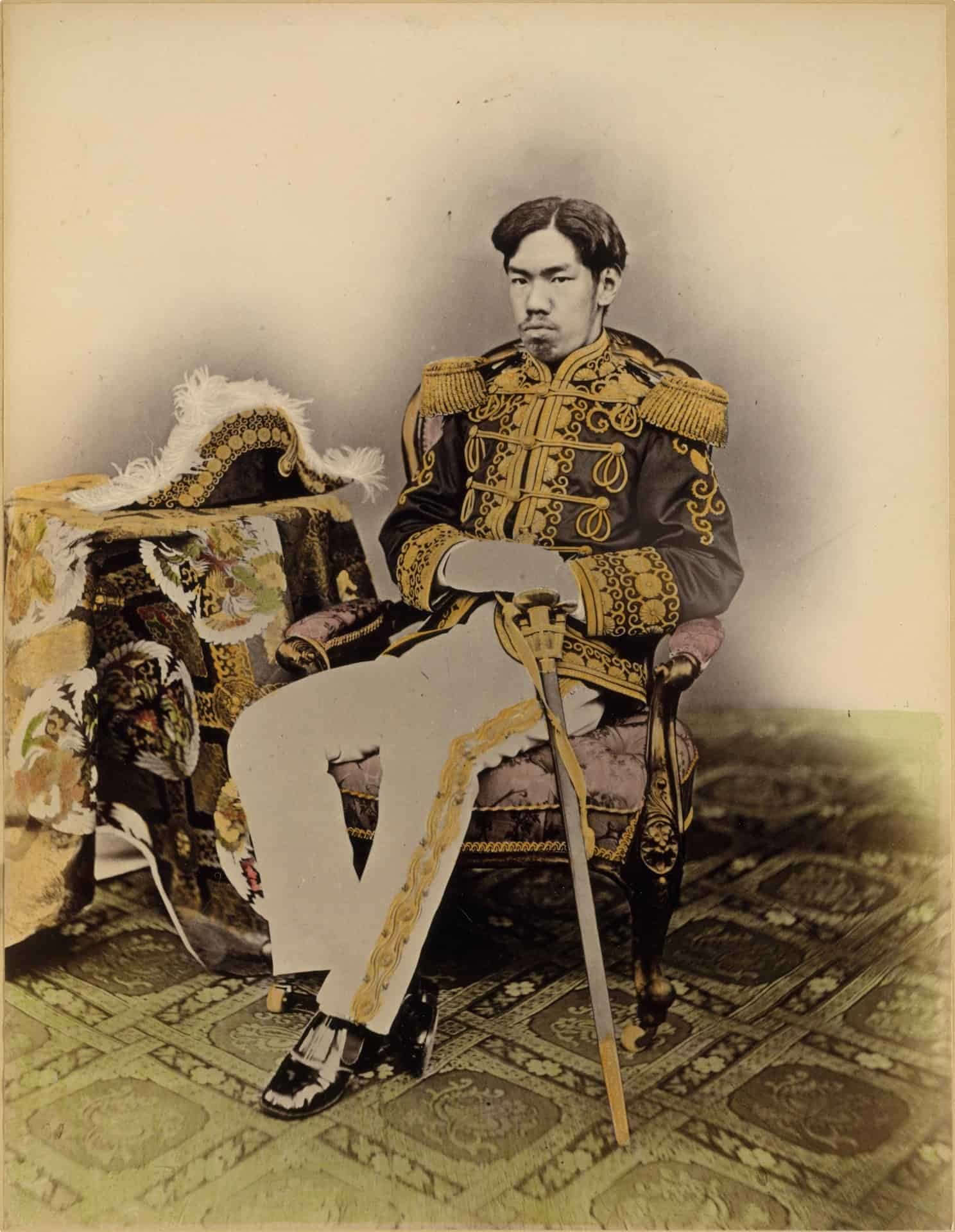
Japan’s cultural leaders established a museum system adopted from the West, inaugurating the Tokyo National Museum in 1872. In 1887, Japan consolidated government schools into the Tokyo Imperial University (now the University of Tokyo) and introduced Western knowledge by bringing in consultants from Europe and United States.
Among the many rapid developments during the era were:
- 1871 – abolition of feudal domains to create a unified country
- 1872 – first railroad built
- 1873 – institution of nationwide conscription to build the military
- 1876 – ban of public wearing of swords for the samurai class
- 1877 – victory of the newly created Japanese imperial army, armed with Western weapons, against the sword-wielding Satsuma Rebellion, the last great rebellion of the samurai
- 1880 – institution of telegraph lines
- 1890 – institution of European-style banking system
- 1895 – victory against China (Sino-Japanese War) for supremacy over Korea
- 1905 – victory against Russia (Russo-Japanese War), again for dominance over Korea and Manchuria
At the time of Emperor Meiji’s death in 1912, Japan was already recognised by the West as a major world power.
Japan entered World War II with a surprise attack on Pearl Harbour and coordinated offensives in Southeast Asia. Japan surrendered when the United States dropped nuclear weapons on Hiroshima and Nagasaki in 1945. The atomic bombings created, according to Elise Kurashige Tipton in The Great Empires of Asia (edited by Jim Masselos, first published in 2010) “a strong sense of pacifism at grassroots level [in Japan] that continues to the present”.
Japan today is characterised by deep respect for its roots, with the preservation (and postwar rebuilding) of historic locations and adherence to customs, but also a forward-looking philosophy allowing it to embrace new technologies, a fusion that continues to beguile travellers the world over.
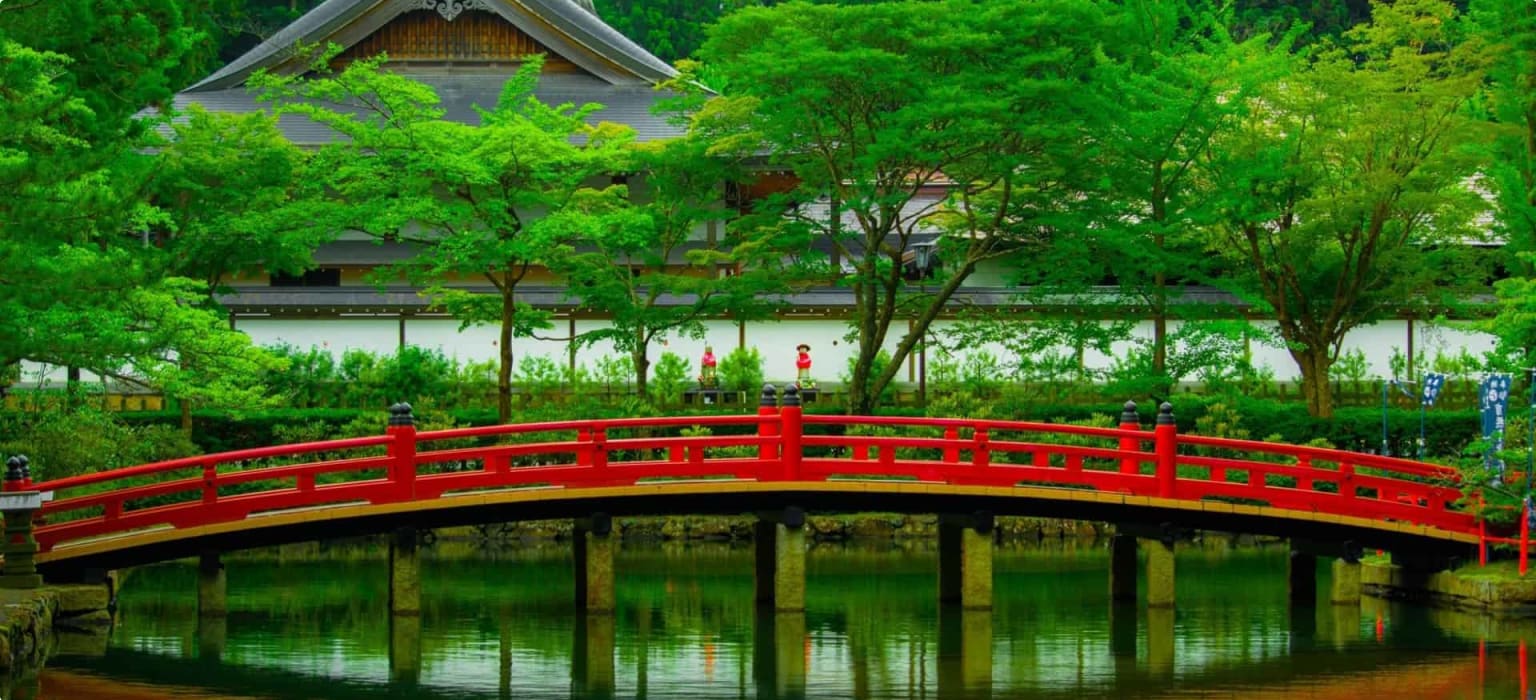
Travel to Japan with Odyssey
This article on the history of Japan, written by Yasuo Masai, Akira Watanabe et al (click here for the full list of contributors) is a good resource, if you wish to read more about the topic.
You can also learn more about the history of the shogunate and the Meiji Restoration with Odyssey Traveller’s tours in Japan, particularly tailored for small groups of active senior travellers. Each has a different focus and an educational theme, providing access to the country’s rich cultural and natural wonders.
- Our Walking Japan small group tour is perfect for the active, mature traveller, whether travelling solo or as a couple. This tour journeys around the northeast region of Japan, while following in the footsteps of the famous 17th century poet, Matsuo Basho.
- In Contemporary Japan small group tour, we explore Japan’s urban wonders, but also enjoy the serenity of its parks and temples. Time is spent in thriving Tokyo, loading up on architecture and electronics, and touring residential neighbourhoods where most tourists don’t get to go. We check out its burgeoning contemporary art scene, stroll through serene gardens, and visit museums. Travellers also visit historic Shimoda on the Pacific Ocean, and spend time exploring ancient Kyoto.
- Our Exploring Japan tour is a journey that will take you from Japan’s imperial city of Kyoto to the neon-lit capital of Tokyo, tracing nearly 2,000 years of history and culture of the Land of the Rising Sun. We will learn about Shintoism and Buddhism, visit temples and other UNESCO-protected World Heritage Sites, admire the country’s natural scenery, and immerse ourselves in Japan’s rich culture.
- Our Japan History by Rail small group tour passes the breathtaking Mount Fuji as we weave our way across the country via Japan’s world-renowned railway system, offering breathtaking views of its natural and urban beauty.
Please click through to learn more and sign up!
Articles about Japan published by Odyssey Traveller.
- A history of Tokyo
- Around the world in six coffees
- Forest bathing in Japan
- Celebrating the Cherry Blossom; Hanami
- Travel tips for travellers to Japan
- Ten of the best books on Japan.
For all the articles Odyssey Traveller has published for mature aged and senior travellers, click through on this link.
External articles to assist you on your visit to Japan.
Related Tours
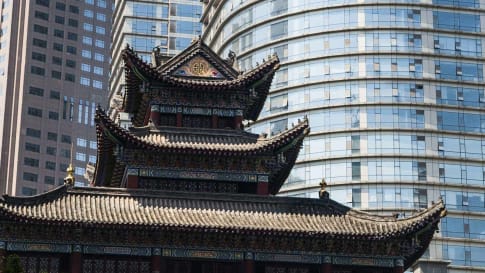
21 days
OctContemporary Japan | Small Group Tour
Visiting Japan
This small group tour organised by Odyssey Traveller, Contemporary Japan, will take you through modern life in this East Asian jewel. This contemporary tour for couples and solo travellers is an expedition through Japan’s major urban areas, beginning and ending in Japan’s tantalising capital, Tokyo. For the first 12 days we get our fill of Tokyo fashion, technology, culture, and sights.
From A$19,625 AUD
View Tour
12 days
Sep, MarJapan Odyssey - Small Group Tours for Mature Travellers
Visiting Japan
During this small group program we encounter history from ancient periods; religions such as Buddhism and Shintoism; the philosophy of the people through visits to world renowned temples and shrines; and old towns full of ancient legends of Samurai and more in Japan. Together we, as mature and senior couples or solo travellers will share some traditions which the Japanese have inherited. A variety of sites including UNESCO World Heritage sites, has been chosen for this tour, all filled with clues such as Hanami or forest bathing to understand the essence of Japan including astro boy.
From A$14,995 AUD
View Tour
14 days
Oct, MayWalking Japan | Small Group Tour
Visiting Japan
Escorted small group tour, Walking Japan, for mature and senior couples and solo travellers, a walking program traces the journey of 17th century Japanese poet and haiku master, Matsuo Basho. We walk in his footsteps on this 13-day journey around the northeast Tohoku region of Japan.
From A$12,715 AUD
View Tour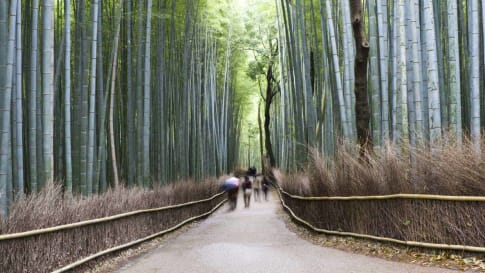
10 days
AprJapan History by Rail - Small Group Tour
Visiting Japan
Explore historic and present day Japan. Journey by rail to regions and great cities to learn about their historical significance.
From A$13,995 AUD
View Tour